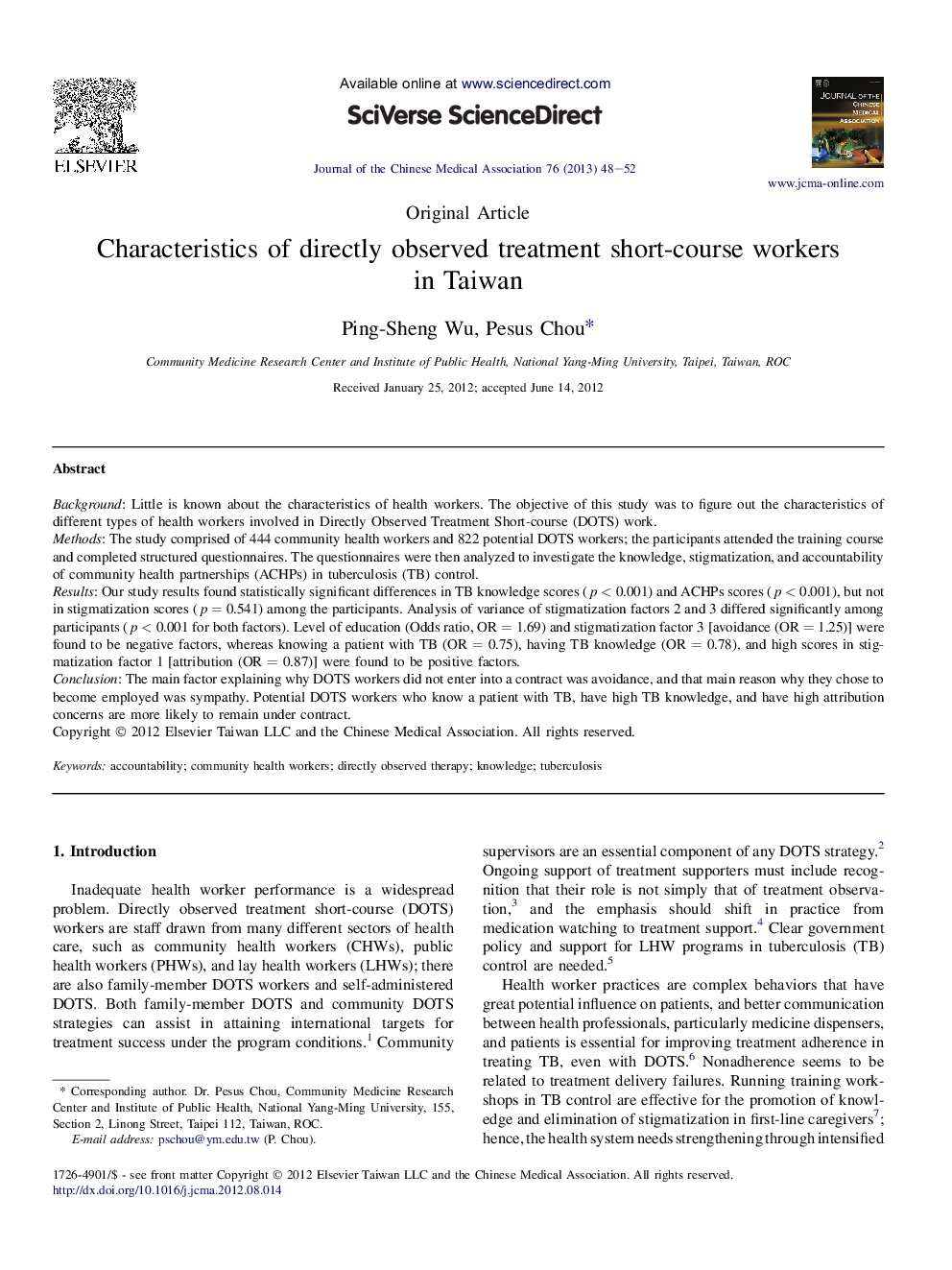| Article ID | Journal | Published Year | Pages | File Type |
|---|---|---|---|---|
| 3476781 | Journal of the Chinese Medical Association | 2013 | 5 Pages |
BackgroundLittle is known about the characteristics of health workers. The objective of this study was to figure out the characteristics of different types of health workers involved in Directly Observed Treatment Short-course (DOTS) work.MethodsThe study comprised of 444 community health workers and 822 potential DOTS workers; the participants attended the training course and completed structured questionnaires. The questionnaires were then analyzed to investigate the knowledge, stigmatization, and accountability of community health partnerships (ACHPs) in tuberculosis (TB) control.ResultsOur study results found statistically significant differences in TB knowledge scores (p < 0.001) and ACHPs scores (p < 0.001), but not in stigmatization scores (p = 0.541) among the participants. Analysis of variance of stigmatization factors 2 and 3 differed significantly among participants (p < 0.001 for both factors). Level of education (Odds ratio, OR = 1.69) and stigmatization factor 3 [avoidance (OR = 1.25)] were found to be negative factors, whereas knowing a patient with TB (OR = 0.75), having TB knowledge (OR = 0.78), and high scores in stigmatization factor 1 [attribution (OR = 0.87)] were found to be positive factors.ConclusionThe main factor explaining why DOTS workers did not enter into a contract was avoidance, and that main reason why they chose to become employed was sympathy. Potential DOTS workers who know a patient with TB, have high TB knowledge, and have high attribution concerns are more likely to remain under contract.
